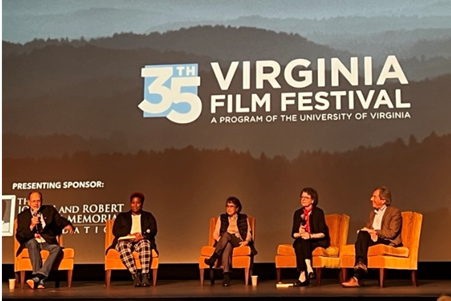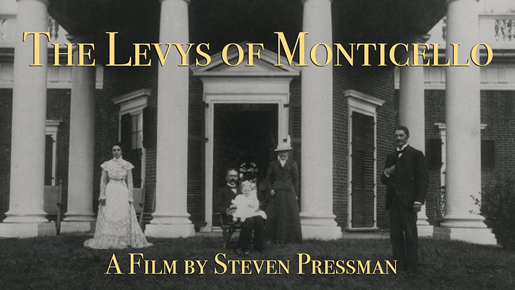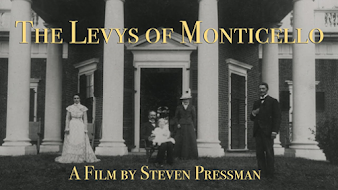Saving Monticello: The Newsletter
The latest about the book, author events, and more
Newsletter Editor - Marc Leepson
Volume XIX, Number 12 December
2022
“The study of the past is a constantly evolving,
never-ending journey of discovery.” – Eric Foner
THE JONAS PHILLIPS VENDUE STORE: Jonas Phillips, Uriah Levy’s beloved maternal grandfather, was a remarkable man. He was born Jonah Phaibush in 1735 in Busek, a village in Prussia. He made his way to London in his early twenties, and at 21 arrived in Charleston, South Carolina, to seek his fortune after an arduous trans-Atlantic journey aboard the ship Charming Nancy.
One of the first things the young man did after arriving in the colonies was Anglicize his name to Jonas Phillips. As I wrote in Saving Monticello, a few years later he moved to Albany, New York, where he became a Free Mason and opened a store selling food and spirits.
Jonas Phillips left Albany in 1761. He married into the Nunez family on November 10, 1762, when he and 16-year-old Rebecca Nunez Machado—the daughter of Maria Caetana (Zipporah) Nunez and the Rev. David Mendes Machado—took their vows at Hickory Town just outside of Philadelphia.
The couple immediately began raising a family. They had 21 children, although several died as infants. The offspring included Uriah Levy’s mother Rachel, who was born on May 23, 1769. The couple moved from Albany to New York City, where Jonas once again owned and operated a retail store. He also was an auctioneer and served the Jewish community as a shohet (ritual slaughterer) and bodek (meat examiner). Around 1774 he moved his growing family to Philadelphia where he opened a vendue store at the upper end of Third Street. Jonas Phillips’ Vendue Store hosted auctions for estates, land, and market goods, and also sold sundries.
The store owner and family man (above) was swept up in the revolutionary fervor in New York and Philadelphia in the 1770s. He spoke out publicly on British abuses of colonists’ rights and signed a letter that was published in the
Jonas Phillips also was an outspoken proponent of freedom of religion. He famously wrote a September 7, 1787, letter on that subject to the Constitutional Convention, which had been meeting since May of that year in Philadelphia to draft a document—which would become the U.S. Constitution—that addressed problems with the weak central government created by the Articles of Confederation.
Identifying himself in the letter as “one of the people called Jews of the City of Philadelphia,” Jonas Phillips called on the Convention to insert provisions in the forthcoming Constitution to provide all men “the natural and unalienable Right to worship almighty God according to their own Conscience and understanding.”
*************
Jonas Phillips was instrumental in raising funds to purchase a new building for the Mikveh Israel synagogue in Philadelphia in 1782. He later was elected the president of that Spanish and Portuguese Congregation, which had been established in 1740. As the head of the congregation, he invited George Washington to attend the dedication ceremonies of its new building.
Jonas Phillips died in Philadelphia in 1803. Rebecca Phillips outlived him by 28 years. Their daughter Rachel had married Michael Levy in Philadelphia in June 1787 when she was 18 years old. Uriah came along in 1792. Family lore has it that the boy idolized his patriotic grandfather. Uriah, the story goes, influenced by his grandfather, had two idols growing up, George Washington and John Paul Jones.
Which might explain why Uriah ran away from home at ten to be a cabin boy on a ship, was part owner of a merchant ship when he was 19, and the following year, 1812, joined the U.S. Navy to fight the British in the war that began that year. In 1834, Uriah purchased Thomas Jefferson’s Monticello, in part because of his admiration for Jefferson’s strong advocacy of religious freedom.
The grandson did not fall far from his grandfather’s tree, inheriting—and acting upon—his love of country and devotion to freedom of religion.
As for the 1776 advertisement above, I am indebted to Nancy Hoffman, a Phillips family descendant, who kindly sent me the image. It’s “the oldest piece of my family’s history that I own,” she said in an email. “I do have a few jewelry objects too, but nothing beats this!”
THE DOC: Steven Pressman’s great documentary, The Levys of Monticello, continues to appear at film festivals. Last month the film received the Audience Award for Best Feature documentary at the 42nd Philadelphia Jewish Film Festival.
It continues to
get great reviews, including this one by Julia Klein published November 30 in The Forward: https://tinyurl.com/43nv3cyw
In it, she notes that the doc “draws the essentials of this distinctively American story” from Saving Monticello, and opines that Susan Stein, Niya Bates, and I offer “pithy commentary” in the movie. I don’t disagree.
For more on the film, go to https://tinyurl.com/43nv3cyw
EVENTS: On Thursday Evening, November 3, I took part in one of the most memorable events I’ve had since the publication of Saving Monticello in November 2001: a reception, a screening of The Levys of Monticello, and a Q&A at the Monticello Visitor Center for the trustees of the Thomas Jefferson Foundation and guests.
It was a
crisp fall evening as we mixed and mingled in the Visitor Center courtyard and
feasted on a buffet prepared by the Monticello Farm Table café.
Then came the screening—complete with popcorn (and wine)—following a gracious introduction by Leslie Greene Bowman, the Foundation’s president.
On,
Sunday, November 5, we took in a
Virginia Film Festival screening of the doc at the beautifully restored
Paramount Theater on the Charlottesville downtown mall, which drew some 850
people. Wjke followed that with another Q&A. It was a memorable weekend.
If you’d like to arrange an event for Saving Monticello or for any of my other books, please email me at marcleepson@gmail.com For details on upcoming events, check the Events page on my website: https://bit.ly/NewAppearances
GIFT IDEAS: For a personally autographed, brand-new paperback copy of Saving Monticello, please e-mail marcleepson@gmail.com I also have a few as-new, unopened hardcover
copies, along with a good selection of new copies of my other books: Flag: An American Biography; Desperate
Engagement; What So Proudly We Hailed; Flag:
An American Biography; and Ballad of
the Green Beret: The Life and Wars of Staff Sgt. Barry Sadler.



























